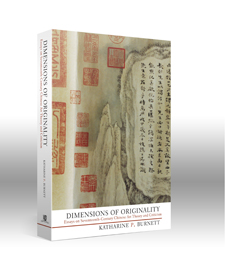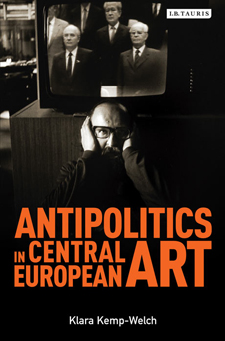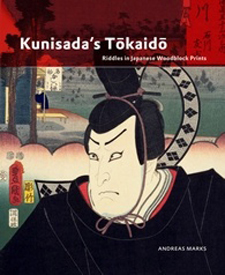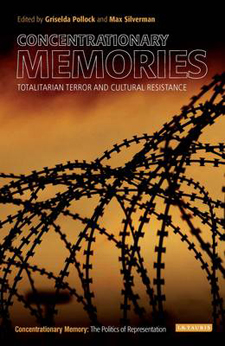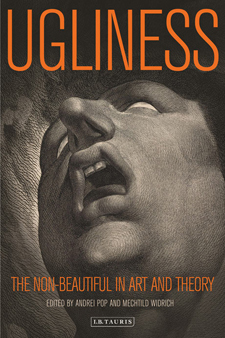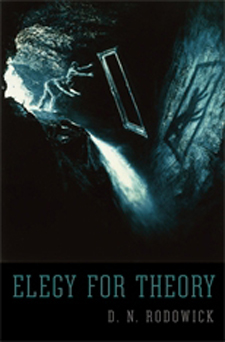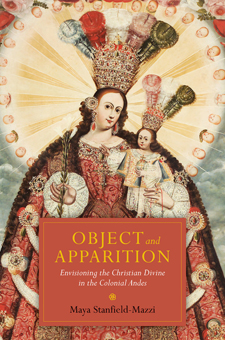CAA News Today
Institutional News
posted by CAA — April 17, 2014
Read about the latest news from institutional members.
Institutional News is published every two months: in February, April, June, August, October, and December. To learn more about submitting a listing, please follow the instructions on the main Member News page.
April 2014
The Arkansas Arts Center in Little Rock has received a spectacular gift of 290 watercolors and drawings by the American artist John Marin (1870–1953) from Norma B. Marin, the widow of the artist’s son.
The Corcoran Gallery of Art and Corcoran College of Art and Design, both in Washington, DC, have announced a merger with the National Gallery of Art and George Washington University, also located in the nation’s capital.
The Courtauld Institute of Art in London, England, and the Iran Heritage Foundation have announced funding for a postgraduate and research-assistant post with a focus on Persian arts.
The Frick Art Reference Library and the William Randolph Hearst Archive at Long Island University (LIU) Post have completed a collaborative digitization project, Gilding the Gilded Age: Interior Decoration Tastes and Trends in New York City. With funding from the New York State Regional Bibliographic Databases Program, this project brings together a group of late-nineteenth and early-twentieth-century auction catalogues held by the library and the archive.
The Los Angeles County Museum of Art in California is one of five major American museums to have received funding for the Andrew W. Mellon Undergraduate Curatorial Fellowship Program, which provides specialized training in the curatorial field for students across the United States with diverse backgrounds.
The Metropolitan Museum of Art in New York has received a gift from Daniel Brodsky, the museum’s chairman, and his wife Estrellita B. Brodsky, an art historian, to endow two new curatorial positions in the museum’s Department of Modern and Contemporary Art. The two positions will be called the Estrellita B. Brodsky Curator of Latin American Art and the Daniel Brodsky Associate Curator of Architecture and Design.
The Museum of Fine Arts, Houston, is one of five major American museums to have received funding for the Andrew W. Mellon Undergraduate Curatorial Fellowship Program, which provides specialized training in the curatorial field for students across the United States with diverse backgrounds.
Ohio State University in Columbus has initiated the Ann Hamilton Project Archive, which contains more than one thousand downloadable, high-resolution images from thirty-five installation by Hamilton, an internationally acclaimed artist and Distinguished University Professor in the university’s Department of Art.
The Yale Center for British Art in New Haven, Connecticut, has reopened its Study Room after completing the first phase of a major building-conservation project.
The Yale School of Art in New Haven, Connecticut, has accepted a $5 million contribution from the Stavros Niarchos Foundation to create a permanent, unrestricted endowment to support the core priorities of the school, while naming in perpetuity the Stavros Niarchos Foundation Dean. A second gift of $900,000 will supplement three existing endowments, created by the foundation in 2010, to establish an artist’s residency, scholarships for international students, and a dean’s resource fund.
Yale University Press in New Haven, Connecticut, has accepted the 2013 Design Book of the Year Award by the editors of Designers & Books for Phyllis Lambert’s volume Building Seagram (2013). The press also received an honorable mention for another book, The Houses of Louis Kahn (2013) by George H. Marcus and William Whitaker.
News from the Art and Academic Worlds
posted by Christopher Howard — April 16, 2014
Each week CAA News publishes summaries of eight articles, published around the web, that CAA members may find interesting and useful in their professional and creative lives.
Dealing Direct: Do Artists Really Need Galleries?
When Haunch of Venison closed in 2013, the Portuguese artist Joana Vasconcelos was left without a gallery in London or New York—the two cities where Haunch, which was bought by Christie’s in 2007, had spaces. Since her gallery closed, Vasconcelos’s career has been on an upward trajectory: she has represented Portugal at the Venice Biennale, unveiled public sculptures in Porto and Lisbon, and produced several new works for a retrospective at the Manchester Art Gallery. (Read more from the Art Newspaper.)
Value/Labor/Arts: A Primer
“When is it okay to work for free? Is it acceptable as long as you’re working with—or for—another artist? What is an artistic service?” These are some of the questions raised by Shannon Jackson, director of the Arts Research Center at the University of California, Berkeley, in her introduction to Art Practical’s latest issue, Valuing Labor. (Read more from Daily Serving.)
The Best Prospective Law Students Read Homer (and Study Art History)
Several years ago, Michael Nieswiadomy released a paper on the LSAT scores of economics majors. I thought I’d make some inquiries with LSAC for some data on this subject to follow up. Applicants to law schools who have degrees in classics placed first, and art-history majors came fourth. (Read more from Excess of Democracy.)
Low Expectations, High Stakes
More than half the nation’s most vulnerable college students are in courses taught by part-time, adjunct faculty members who lack the job security, credentials, and experience of full-time professors—as well as the campus support their full-time peers receive. Community colleges rely on part-time, “contingent” instructors to teach 58 percent of their courses, according to a new report. (Read more from Inside Higher Ed.)
Team-Based Learning for Art Historians
Recently two professors participated in a workshop on team-based learning at Brooklyn College, a process in which students are divided into permanent teams for the semester and work during class on activities based on readings. Team-based learning was developed by professors working with business and marketing majors in large lecture classes. While claims that students reportedly read and engage more are attractive, can this model be applied to an art-history class? (Read more from Art History Teaching Resources.)
Precocious Professionalism: An Academic Epidemic?
The job crisis facing young American PhDs today has an analogue in one earlier historical period: the situation of newly minted lawyers and physicians in early-nineteenth-century France. After the French Revolution abolished the guilds, regulation of recruitment ceased in not only artisanal crafts and mercantile trades but also faculties of law and medicine. As the number of law and medical students soared, employment prospects correspondingly diminished. (Read more from Perspectives on History.)
Insurer Solicits Offers for DIA Artwork; Several Billion-Dollar Bids Received
A group of major Detroit creditors said four investors have made tentative billion-dollar bids for the Detroit Institute of Arts—or key portions of its collection—in a move aimed at undercutting the city’s competing proposal to give the museum to a nonprofit in exchange for $816 million in outside funding that would help reduce pension cuts. (Read more from the Detroit Free Press.)
How to Avoid a Digital Boom and Bust
The Microsoft Corporation donated more than $1.5 million worth of software to the Museum of Fine Arts, Boston, to upgrade its computer systems and help the museum put more of its collection online. Meanwhile, the Art Institute of Chicago will soon launch an app that transforms visitors’ smartphones into pocket-sized curators. Like many digital projects, the Art Institute’s app and the MFA Boston’s upgrades received a green light only because of external funding. But some experts worry about what will happen if and when grants for digital development diminish. (Read more from the Art Newspaper.)
Call for Peer Reviewers
posted by CAA — April 16, 2014
2014 Arts in Education Model Development and Dissemination & Professional Development for Arts Educators
CALL FOR PEER REVIEWERS
The U.S. Department of Education, Office of Innovation and Improvement (OII), is seeking individuals to review grant applications for the FY 2014 Arts in Education Model Development and Dissemination (AEMDD) and Professional Development for Arts Educators (PDAE) grant competitions. The AEMDD program supports research and evaluation, sustainability, documentation and dissemination of innovative models that demonstrate effectiveness for student improvement and performance in the elementary and middle school curricula. The PDAE program supports the implementation of a high-quality model for professional development of educators and instructional staff working with kindergarten through 12 grade students (K-12) in high-poverty schools. Integration of art disciplines for both programs includes: music, dance, drama, media arts, visual arts, and folk arts.
WHO: We are seeking peer reviewers from various backgrounds and professions including:
- Arts or Arts Education,
- Elementary through High School Education,
- College and University Educators
- Professional Development,
- Special Populations,
- Research and Evaluation,
- Curriculum Development,
- Model Development,
- Educational Partnerships,
- Non-Profit Organizations, and
- School Administration.
Peer reviewers may have expertise in various geographies, including urban, suburban, rural, and tribal communities.
REQUIRED AREAS OF EXPERTISE: The selected peer reviewers should have expertise in at least one of the following areas: professional and/or curriculum development, applied research and evaluation, arts based program management and design. Selected reviewers may choose to review applications for the AEMDD competition, the PDAE competition or both.
- Professional and Curriculum Development: Experience designing, evaluating, or implementing effective lesson plans and methods to learning for K-12, that focuses on teaching strategies and student engagement inside and outside of the classroom
- Experience integrating the arts into other core academic subjects
- Experience developing model in-service professional development programs for arts educators and other instructional staff
- Experience transferring or adapting projects/organizations to new settings
- Fluency in reviewing organizational assessment tools for project effectiveness
Applied Research and Evaluation:
- Extensive knowledge about current research findings in the What Works Clearinghouse (WWC) and comprehensive school reform models, with knowledge of how to apply those strategies in a variety of settings
- Knowledge of arts in education data sources and measures of program implementation and outcomes
- Knowledge and experience in developing logic models
- Expertise with experimental and quasi-experimental art based research designs
- Understanding of and experience with proven research methods successful in integrating effective practices
Arts Program Management and Design:
- Knowledge and understanding of effective operational and organizational/management infrastructures (e.g. people, processes, accountability structures, technology systems, program and grant management)
- Knowledge of or experience with building effective partnerships in a variety of sectors (education, legislative, private sectors, etc.) and successfully engaging diverse groups of stakeholders
- Experience using one or more of the following arts disciplines in program design: music, dance, drama, media arts, visual arts, and/or folk arts
- Experience building capacity and financial sustainability in organizations
- Experience developing policy to support adaptation of organizational change
- Expertise in recognizing and developing effective arts models in program implementation, particularly those for underserved students in high-poverty communities
- Experience reviewing grant applications
PEER REVIEWER EXPECTATIONS:
Application Review: Selected peer reviewers will independently read, score, and provide written comments for approximately 10 grant applications submitted to the U.S. Department of Education under the AEMDD and/or the PDAE grant programs.
Availability: Peer reviewers must generally be available for a 4 week time period and will work remotely and via teleconference. The peer review will devote time reading, scoring, developing comments, and discussing assigned applications. In addition, all reviewers will be required to participate in an online orientation webinar prior to reviewing applications.
AEMDD will require peer reviewers from May 12 until June 20, 2014.
PDAE will require peer reviewers from June 24 until July 31, 2014.
*These dates are estimates and will be confirmed upon peer reviewer selection*
Tools: Each reviewer must have access to the Internet, a phone, a computer, a printer and have the ability to access and navigate the G5 web-based system.
Quality of review: Each reviewer must provide detailed, objective, constructive, and timely written reviews for each assigned application. These reviews will be used to recommend applications for funding. They will also be shared with each applicant and the comments regarding winning applicants will be made available to the general public following the reviews.
Completion of review: Reviewers will receive an honorarium for the satisfactory completion of the above requirements during the grant review schedule. A satisfactory review requires that each application is read, scored, and discussed. The final, high-quality comments and corresponding scores will be reviewed and approved by a panel moderator prior to their final submission in the G5 system.
IF INTERESTED: If you would like to be considered as a peer reviewer, please click here and complete the Peer Reviewer Application Form. Even if you applied to be a peer reviewer for either the AEMDD and/or the PDAE grant competitions in the years prior, you must complete the Peer Reviewer Application Form. Please only submit one Peer Reviewer Application Form via the link provided above. Please also send your resume to the email address provided below no later than April 25, 2014.
Please do not exceed the three-page limit for resumes.
If you have any questions about the peer review process, please contact us by email: artspeerreviewcall@ed.gov
PROGRAM INFORMATION:
For more information about the AEMDD program, go to:
http://www2.ed.gov/programs/artsedmodel/index.html
For more information about the PDAE program, go to:
CAA Salutes Its Fifty-Year Members
posted by Christopher Howard — April 15, 2014
CAA warmly thanks the many contributions of the following dedicated members who joined CAA in 1964 or earlier. This year, the annually published list welcomes thirteen artists, scholars, and curators whose distinguished exhibitions, publications, and teaching practices have shaped the direction and history of art over the last fifty years.
1964: Richard J. Betts; Ruth Bowman; Vivian P. Cameron; Kathleen R. Cohen; Paula Gerson; Ronald W. Johnson; Jim M. Jordan; William M. Kloss; Rose-Carol Washton Long; Phyllis Anina Moriarty; Annie Shaver-Crandell; Judith B. Sobre; and Alan Wallach.
1963: Lilian Armstrong; Richard Brilliant; Eric G. Carlson; Dean Carter; Vivian L. Ebersman; Francoise Forster-Hahn; Walter S. Gibson; Caroline M. Houser; Susan Koslow; E. Solomon; Lauren Soth; Richard E. Spear; Roxanna A. Sway; Athena Tacha; and Roger A. Welchans.
1962: Jo Anne Bernstein; Phyllis Braff; Jacquelyn C. Clinton; Shirley S. Crosman; Frances D. Fergusson; Gloria K. Fiero; Jaroslav Folda; Rosalind R. Grippi; Harlan H. Holladay; Seymour Howard; Alfonz Lengyel; Mary L. Maughelli; David Merrill; Francis V. O’Connor; John T. Paoletti; Nancy P. Sevcenko; Thomas L. Sloan; Elisabeth Stevens; Anne Betty J. Weinshenker; and William D. Wixom.
1961: Matthew Baigell; Margaret Diane David; W. Bowdoin Davis Jr.; David Farmer; J. D. Forbes; Isabelle Hyman; Henry A. Millon; Clifton C. Olds; Marion E. Roberts; David Rosand; and Conrad H. Ross.
1960: Shirley N. Blum; Kathleen Weil-Garris Brandt; Dan F. Howard; Eugene Kleinbauer; Edward W. Navone; Linda Nochlin; J. J. Pollitt; and Claire R. Sherman.
1959: Adele M. Ernstrom; Geraldine Fowle; Carol H. Krinsky; James F. O’Gorman; and Ann K. Warren.
1958: Samuel Y. Edgerton Jr.; Damie Stillman; and Clare Vincent.
1957: Marcel M. Franciscono; Bruce Glaser; Jane Campbell Hutchison; and John F. Omelia.
1956: Svetlana L. Alpers; Norman W. Canedy; David C. Driskell; John Goelet; Joel Isaacson; Jack J. Spector; and John M. Schnorrenberg.
1955: Lola B. Gellman; Irving Lavin; Marilyn A. Lavin; and Suzanne Lewis.
1954: Franklin Hamilton Hazlehurst; Patricia C. Loud; Thomas J. McCormick; Jules D. Prown; Jane E. Rosenthal; Irving Sandler; Lucy Freeman Sandler; and Harold Edwin Spencer.
1953: Dorathea K. Beard; Margaret McCormick; Seymour Slive; and Jack Wasserman.
1951: Wen C. Fong.
1950: Marilyn J. Stokstad.
1949: Dario A. Covi; and Ann-Sofi Lindsten.
1948: William S. Dale.
1947: Dericksen M. Brinkerhoff; David G. Carter; Ellen P. Conant; Ilene H. Forsyth; and J. Edward Kidder Jr.
1945: James S. Ackerman.
Grants, Awards, and Honors
posted by CAA — April 15, 2014
CAA recognizes its members for their professional achievements, be it a grant, fellowship, residency, book prize, honorary degree, or related award.
Grants, Awards, and Honors is published every two months: in February, April, June, August, October, and December. To learn more about submitting a listing, please follow the instructions on the main Member News page.
April 2014
Molly Emma Aitken, associate professor of art at City College, City University of New York, has accepted a Collaborative Research Grant from the American Council of Learned Societies for her project with Allison Renée Busch, called “Aesthetic Worlds of the Indian Heroine.”
Elizabeth Athens, an independent scholar based in Providence, Rhode Island, was named a Clark Graduate Summer Fellow for July–August 2013 by the Sterling and Francine Clark Art Institute in Williamstown, Massachusetts.
Suzanne Preston Blier, Allen Whitehill Clowes Professor of Fine Arts and of African and African American Studies in Cambridge, Massachusetts, received a Beinecke Fellowship from the Sterling and Francine Clark Art Institute in Williamstown, Massachusetts, for September–December 2013.
William L. Coleman, a PhD candidate in history of art at the University of California, Berkeley, has been awarded the 2014 Dora Wiebenson Prize by the Historians of Eighteenth-Century Art and Architecture. The paper honored as the best of the year by a graduate student was “‘Both instructive and pleasant’: The Country House Garden in Vitruvius Britannicus,” given at CAA Chicago.
Romy Golan, professor of art history at and Lehman College and the Graduate Center, City University of New York, won a fellowship from the Sterling and Francine Clark Art Institute in Williamstown, Massachusetts, for September–December 2013.
Michael Ann Holly, Starr director emeritus of research and academic programs at the Sterling and Francine Clark Art Institute in Williamstown, Massachusetts, has been awarded a fellowship from her institution for February–June 2014.
Simon Leung, an artist and professor of art for the University of California, Irvine, has earned a fellowship from the Sterling and Francine Clark Art Institute in Williamstown, Massachusetts, for February–June 2014.
Judith Rodenbeck, professor of modern and contemporary art at Sarah Lawrence College in Bronxville, New York, was named a fellow by the Sterling and Francine Clark Art Institute in Williamstown, Massachusetts, for September–December 2013.
Terence Smith, Andrew W. Mellon Professor of Contemporary Art History and Theory in the Department of the History of Art and Architecture at the University of Pittsburgh in Pennsylvania, has received a fellowship for February–June 2014 from the Sterling and Francine Clark Art Institute in Williamstown, Massachusetts.
Roberto Tejada, professor of art history in the Meadows School of the Arts at Southern Methodist University in Dallas, Texas, was named Clark/Oakley Humanities Fellow and Clark Mellon Curatorial Fellow by the Sterling and Francine Clark Art Institute in Williamstown, Massachusetts, for September–December 2013.
Exhibitions Curated by CAA Members
posted by CAA — April 15, 2014
Check out details on recent shows organized by CAA members who are also curators.
Exhibitions Curated by CAA Members is published every two months: in February, April, June, August, October, and December. To learn more about submitting a listing, please follow the instructions on the main Member News page.
April 2014
Reni Gower. Papercuts: The Art of Contemporary Papercutting. Muskegon Museum of Art, Muskegon, Michigan, January 9–March 16, 2014.
Valentina Locatelli. Open Sesame! Anker, Hodler, Segantini; Masterpieces from the Foundation for Art, Culture, and History. Kunstmuseum Bern, Bern, Switzerland, March 7–August 24, 2014.
Melissa Potter and Jessica Cochran. Social Paper: Hand Papermaking in the Context of Socially Engaged Art. Center for Book and Paper Arts, Columbia College Chicago, Chicago, Illinois, February 10–April 15, 2014.
Sarah G. Sharp. Offline. Radiator Gallery, RadiatorArts, Long Island City, New York, February 7–March 15, 2014.
Books Published by CAA Members
posted by CAA — April 15, 2014
Publishing a book is a major milestone for artists and scholars—browse a list of recent titles below.
Books Published by CAA Members appears every two months: in February, April, June, August, October, and December. To learn more about submitting a listing, please follow the instructions on the main Member News page.
April 2014
Katharine P. Burnett. Dimensions of Originality: Essays on Seventeenth-Century Chinese Art Theory and Criticism (Hong Kong: Chinese University Press, 2013).
Klara Kemp-Welch. Antipolitics in Central European Art: Reticence as Dissidence under Post-Totalitarian Rule 1956–1989 (London: I. B. Tauris, 2013).
Andreas Marks. Kunisada’s Tōkaidō: Riddles in Japanese Woodblock Prints (Leiden, the Netherlands: Brill, 2013).
Griselda Pollock and Max Silvermann, eds. Concentrationary Memories: Totalitarian Terror and Cultural Resistance (London: I. B. Tauris, 2013).
Andrei Pop and Mechtild Widrich, eds. Ugliness: The Non-Beautiful in Art and Theory (London: I. B. Tauris, 2013).
D. N. Rodowick. Elegy for Theory (Cambridge, MA: Harvard University Press, 2014).
Maya Stanfield-Mazzi. Object and Apparition: Envisioning the Christian Divine in the Colonial Andes (Tucson: University of Arizona Press, 2013).
President Obama Announces His Intent to Nominate Dr. William “Bro” Adams as Chairman of the National Endowment for the Humanities
posted by Christopher Howard — April 10, 2014
Today, President Obama announced his intent to nominate Dr. William “Bro” Adams as Chairman of the National Endowment for the Humanities.
President Obama said, “Bro brings demonstrated leadership and decades of experience as an administrator at major universities and liberal arts institutions. His clear dedication and lifelong commitment to the humanities make him uniquely qualified to lead the nation’s cultural agency. I’m proud to nominate Bro as Chairman of the National Endowment for the Humanities and look forward to working with him in the months and years to come.”
Dr. William “Bro” Adams is President of Colby College, a position he has held since 2000. Previously, he was President of Bucknell University from 1995 to 2000. Dr. Adams was Vice President and Secretary of Wesleyan University from 1993 to 1995, and was Program Coordinator of the Great Works in Western Culture program at Stanford University from 1986 to 1988. Earlier in his career, he held various teaching positions at Stanford University, Santa Clara University, and the University of North Carolina. Dr. Adams served in the Vietnam War as a First Lieutenant in the U.S. Army. In 1977, he became a Fulbright Scholar and conducted research at the Ecole des Hautes Etudes and the Ecole Normale Superieure in Paris, France. Dr. Adams is a member of the Board of Directors of the Maine Film Center and the Maine Public Broadcasting Corporation. Dr. Adams received a B.A. from the Colorado College and a Ph.D. from the University of California, Santa Cruz.
Committee on Women in the Arts Picks for April 2014
posted by CAA — April 10, 2014
Each month, CAA’s Committee on Women in the Arts selects the best in feminist art and scholarship. The following exhibitions and events should not be missed. Check the archive of CWA Picks at the bottom of the page, as several museum and gallery shows listed in previous months may still be on view or touring.
April 2014
Claudia DeMonte: La Forza del Destino
June Kelly Gallery
166 Mercer Street, New York, NY 10012
April 10–May 13, 2014
Claudia DeMonte: La Forza del Destino presents a new series of paintings and sculptures focused on symbols of good and bad luck from around the world. For decades, Claudia DeMonte has been involved in collaborative research and art production with women artists across the globe. As curator, DeMonte is the artifice of WOMEN OF THE WORLD: A Global Collection of Art. This traveling exhibition, with accompanying comprehensive publication, includes the works and statements of women artists from 177 countries portraying their image of what means being a woman in their cultural environment. In her later project, Real Beauty, DeMonte commissioned handmade fabric dolls from artists and crafters to express local concepts of female beauty, standards that are being lost due to plastic reproductions and globalization.
From Bhutan, Laos, and Saudi Arabia to Senegal and Tibet, DeMonte has traveled the globe observing cultures, customs, and idiosyncrasies from women perspectives and often working collaboratively with local women workshops. In one of the works presented in La Forza del Destino, DeMonte uses a female form sculpted from wood and laden with pictographic configurations suggesting lucky charms of protection. Her new works make evident, once again, her continued interest in women’s multifaceted roles and impact as storytellers, historians, and mythological controllers of destiny. In DeMonte’s own words, La Forza del Destino examines from a women’s perspective the icons that represent luck, superstition, and protection from the evils of the world.
Ane Mette Hol: In the Collection
Trondheim Kunstmuseum
Bispegata 7 B, 7013 Trondheim, Norway
February 8–May 18, 2014
Trondheim Kunstmuseum presents In the Collection, a solo exhibition by the Oslo-based artist Ane Mette Hol (b. Bodø, 1979), who uses drawing as a research method that investigates the relationships between originals and reproductions. The “accurate copies” of objects and phenomena are the result of a painstaking work, questioning the very medium of drawing. By using paper and drawing tools, Hol copies things with precision down to the finest detail. She has made copies of brown paper, rolls of drawing paper, music sheets, drawing pads, and book covers, as well as printouts from the internet and botched photocopies. Through her completed works, she challenges the relationship between original and copy with an almost Borgesian approach. Furthermore, through this relationship, Hol’s works comment on our continuous recycling of what already exists and on our common knowledge about art history and theory. In this, she questions the nature of art; its premises in terms of content, politics, and institution through remarkable technical skill and through innovative frames of reference and conceptual discourse.
In the exhibition at Trondheim Kunstmuseum, Hol has based her work on a drawing of a photocopy from Charles Wood’s book How to Draw Portraits (1943). The drawing shows the book’s list of contents, and the exhibition is based on the different sections of the book. As the exhibition title suggested, the show features works from the museum’s collections and from Hol’s drawings, animations, and sound installations.
Maria Lassnig
MoMA PS1
22-25 Jackson Avenue, Long Island City, NY 11101
March 9–May 25, 2014
Maria Lassnig (Austrian, b. 1919) is one of the most important contemporary women painters. Through what she called “body awareness,” her paintings mean an exploration of the inner world. She focused on representing the way her body feels to her from the inside, rather than attempting to depict it from outside. Lassnig’s remarkable career has spanned more than seventy years. Throughout the decades she has continued to create work that vulnerably explores the way she comes into contact with the world, emphasizing often the disjunctions between her own self-image, challenging the way she may be seen by others as a woman, as a painter, and as a person who has lived through the dramatic technological and cultural shifts that have marked the century of her lifetime. In her paintings, Lassnig exposes personal traumas, fantasies, and nightmares, offering instruction for courageous living in a time of social interaction.
From all creative periods of her career, spanning her early involvement with graphic abstraction in Paris and Art Informel, to her later shift to figural representation, Lassnig’s exhibition at PS1 is the most significant survey of the artists’ work ever presented in the United States. The show, focusing in her self-portraits, features approximately fifty paintings drawn from public and private holdings and from the artist’s own collection. A selection of watercolors and filmic works, many of which have never been previously seen in the United States, also make an appearance in the exhibition.
Mimi Smith: Constructing Art about Life
Harold B. Lemmerman Gallery
New Jersey City University Galleries, Hepburn Hall, 2039 Kennedy Boulevard, Room 323, Jersey City, NJ 07305
March 20–April 24, 2014
Mimi Smith: Constructing Art about Life is a concise survey of Mimi Smith’s work over the past five decades, curated by Midori Yoshimoto. A New York–based artist and a graduate of Rutgers University, Smith is best known for the clothing sculptures she begun in the mid-1960s, the most prominent being Steel Wool Peignoir (1966), a see-through dressing gown embellished with lace and steel wool that has become an icon of early feminist art. Combining banal consumer or domestic objects—such as the wrapping plastics of various consumer goods in Recycle Coat (1965), the bath mats in Girdle (1966), or the pieced-together plastics in Maternity Dress (1966)—Smith radically intervened in Pop art, producing feminist sartorial sculptures that addressed the role of fashion in women’s individual and social identities, while unmasking the complicated relationship of the public and the private in women’s lives.
In the early 1970s Smith challenged the Conceptual art of her time from the homebound perspective of a female artist and a mother, then raising her children in Ohio, with a series of works that merit further evaluation for their contribution to postwar art and their diverse politics. These include series of large-scale drawings done with measuring tape and knotted thread that replicates the rooms and furniture of her home, as well as multimedia installations that allude to the pervasiveness of new technologies and the increasing invasiveness of the news media, and also to the environment and nuclear threats.
Sculptural cloth making and clothing itself continue to play a great role in Smith’s contemporary investigation of gendered identity and politics, as seen in her recent ruminations on women’s aging through drawn representations of underwear.
Lee Bontecou: Drawn Worlds
Menil Collection
1533 Sul Ross Street, Houston, TX 77006
January 31–May 11, 2014
Curated by Michelle White under the auspices of the Menil Drawing Institute, Lee Bontecou: Drawn Worlds is the first museum survey to focus on Lee Bontecou’s works on paper. It brings together over seventy works from various collections, including that of the Menil, that sample her drawing practice from 1958 to 2012. The show is accompanied by a fully illustrated catalogue with essays by White, Dore Ashton, and Joan Banach.
Advancing the understanding of the work of this incredible artist, Drawn Worlds explores Bontecou’s experimentation in materials and techniques, such as her early use of a welding torch to deposit velvet layers of black soot on paper, muslin, and canvas. The exhibition also contextualizes the artist’s distinctive iconography, especially her penchant for circles and voids, within the political and environmental concerns of the time of their making. Above all it provides a unique opportunity to witness the “unsettling realms of human folly and the frailty of the natural world” in which Bontecou’s “drawn words” take the viewer, while studying the forms that characterize them, whether as origins of her sculptures or independent transmutations of her haunting vocabulary.
Betye Saar: Redtime Est
Michael Rosenfeld Gallery
100 Eleventh Avenue, New York, NY 10001
March 15–May 3, 2014
Betye Saar is widely known for multimedia collages, box assemblages, altars, and installations consisting of found materials that, as put by the artist, “reach across the barriers of art and life to bridge cultural diversity and forge new understandings,” in effect voicing various political, racial, spiritual and gender concerns. Redtime Est (2011), a variation of the eponymous installation for Pacific Standard Time in Los Angeles three years ago, offers a unique opportunity to indulge the affective sensibility of her highly political objects.
Redtime Est consists of red, or chameleonlike red, works that are curated by the artist in and around a room whose walls are painted red, “the color of anger, danger, violence, heat, passion, blood and fire.” A caged mannequin with a crow as head and dressed with shackles guards the entrance to Redtime Est, setting its tone, while Red Ascension, a painted red ladder, hangs diagonally across the wall that faces the viewer upon his or her entrance, cinematically commemorates the slaves’ trip from Africa to America with various symbolic objects featured in each frame, ranging from an African mask to handcrafted ships to red-painted chains and padlocks.
Unlike the miniretrospective character of the Redtime Est, this one is a mega-assemblage of recent works, the earliest dating from the early 1990s, whose subject matter, as in Justice (2011) features Aunt Jemima, is manifested with signature tropes of the feminist and antiracist underpinnings of the artist’s assemblage practice since the 1960s. Focusing on the most political aspects of her work, the artist brings together objects for Redtime Est that, while sampling the various modes of her practice from painting to assemblage and the sheer repurposing of found objects, illustrate the way in which she used “derogatory” stereotypes of blackness and recycled objects of poignant history and function, such as washboards, to make powerful and empowering critical statements about race and gender with an idiosyncratic marriage of past and present, her homage to her ancestors and her radical legacy to future.
Alexandra Bachzetzis and Claire Hooper
Bonner Kunstverein
Hochstadenring 22,
D-53119 Bonn, Germany
February 22–May 25, 2014
Bonner Kunstverein juxtaposes the deconstructive and seductive ways in which pop culture is respectively employed in the work of the performer and choreographer Alexandra Bachzetsis and the filmmaker Claire Hooper, putting in dialogue the exploration of the distinct significance given by social media in the staging of personality and life today as well as the ways in which their practice challenges the exhibition format. While Bachzetsis performed with Anne Pajunen for A Piece Danced Alone (2011) during the opening, her work is mostly represented through video documentations of her choreographies. Hooper’s videos are exhibited as part of structures that function as projection surfaces and architectural ornamentation, creating links between the exhibition space, the illusionistic space of the film, and its documentary function in a manner typical of Hooper, as, for instance, by recreating a Berlin subway environment.
Bachzetsis’s works depict the controlled movements of bodies following a clear sequence in evocative situations that condense reflections of the contemporary media culture into studies of motion by means of mirroring and repetition. By isolating gestures and body language from the flow of the familiar as signs of cultural codes she deconstructs the sequence of events, while also variously analyzing the mechanics of TV soaps and hip hop video clips, classical ballet, modern dance, and performance art.
Hooper’s films, in which the British tradition of documentaries encounters Greek mythology, focus on figures in precarious social circumstances and their entanglement in restrictive systems that are converted into collective social areas through parablelike, mythological enhancement. Interchangeable elements from everyday life in documentary fashion oscillate kaleidoscopically with theatrically charged passages. While pop culture plays an equally important part in the staging of her figures, Hooper depicts the body in seemingly surreal dance performances that enable her to portray the irrational and also the compulsive forces that continue to drive our society. A dialogue about the body and its representation in the media, as well as its physical and social limitations, develops between their works. Both artists depict the body and the figure as shimmering, constantly changing projection surfaces.
News from the Art and Academic Worlds
posted by Christopher Howard — April 09, 2014
Each week CAA News publishes summaries of eight articles, published around the web, that CAA members may find interesting and useful in their professional and creative lives.
Delaware Art Museum’s Deaccession Debacle: My Q&A with Its Former Director, Danielle Rice
While the Delaware Art Museum has been the target of considerable criticism among museum professionals for its decision to sell art to repay debts and enhance the endowment, no one has been more distressed by this development than the museum’s own former director, Danielle Rice, who left at the end of August to direct a program in museum leadership at Drexel University. In a candid, in-depth conversation, Rice expressed her strong disapproval of what the trustees did after she left, outlined what should have been done instead, and commented on what lies ahead for her former institution. (Read more from Culturegrrl.)
Detroit Creditors Demand a Full Reckoning of Museum’s Art
The Detroit Institute of Arts has hit an obstacle in its ongoing quest to safeguard its collection from the city’s creditors amid Detroit’s bankruptcy proceedings. Over the past week, two groups of creditors served the museum with wide-ranging subpoenas for records covering the past hundred years and documenting the ownership history of every work in its 60,000-piece collection. (Read more from the Art Newspaper.)
What I Learned from Organizing a Conference
Conferences are an integral part of developing oneself as an academic, especially for a graduate student. They provide the chance to practice public speaking, are a great way to get feedback on the progress of one’s work, and are one of the best ways to network with others in your field. But what if you want to be on the other side of the conference? What if you want to organize one? (Read more from GradHacker.)
Galleries Are Man’s World, and Micol Hebron Is Keeping Score
While browsing the glossy pages of Artforum, the artist Micol Hebron kept getting the feeling that male artists were disproportionately represented in the magazine’s advertising. “People assumed that there was an inequity there, but no one had any data,” she recalls. “So every time I got the physical magazine, I would count the ads—the full-page ads for single artists—since that tells you who the galleries are putting their weight behind.” Month after month, she says, the count was roughly the same, “Usually, about 70 percent men.” Sometimes it was worse. (Read more from KCET.)
I’m the Biggest Man on Campus
Overweight professors across academe describe similar battles to achieve self-acceptance, full inclusion in academic life, and genuine respect from students and colleagues. Some struggle daily to navigate campus spaces that don’t comfortably accommodate their size. Some stand in front of classrooms and wonder whether their bodies influence how students perceive their minds. Some say they have trouble adhering to exercise plans or healthy eating habits because their jobs come with lots of research and little structure. Yet larger professors often grapple with these concerns in isolation and silence. (Read more from Vitae.)
What Can You Do with a Humanities PhD, Anyway?
There is a widespread belief that humanities PhDs have limited job prospects, yet recent studies suggest that these tragedies do not tell the whole story. It is true that the plate tectonics of academia have been shifting since the 1970s, reducing the number of good jobs available in the field. What is less widely known is between a fifth and a quarter of them go on to work in well-paying jobs in media, corporate America, nonprofits, and government. (Read more from the Atlantic.)
Stuck in the Middle
Associate professors, in theory, should be hitting a stride in their academic careers. In the middle ranks of faculty, they have typically earned tenure and started to take on broader responsibilities in their departments, juggling more service and governance roles with their teaching and research. But the earning power of these professors is diminishing compared with their peers in ranks above and below them. (Read more from the Chronicle of Higher Education.)
Room to Grow
Flexibility stigma is a term scholars use to describe work places that punish those who don’t fit the “ideal worker” profile: solely devoted to one’s job, available twenty-four hours a day and traditionally male. Lots of studies suggest that in academe, such biases are particularly prevalent in the sciences, and that women with young children are the most frequent targets. But a new study argues that both men and women with small children report and resent inflexible department cultures. It also finds that even nonparents resent flexibility stigma, with negative consequences for the department over all. (Read more from Inside Higher Ed.)





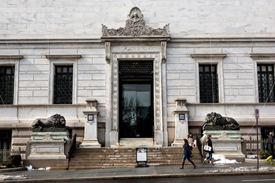 The Corcoran Gallery of Art and Corcoran College of Art and Design (photograph by William Atkins/George Washington University and © George Washington University Photography)
The Corcoran Gallery of Art and Corcoran College of Art and Design (photograph by William Atkins/George Washington University and © George Washington University Photography)
 Ann Hamilton
Ann Hamilton
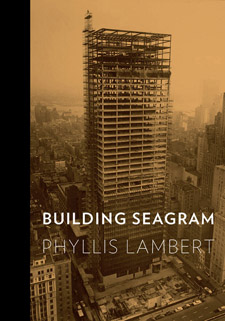

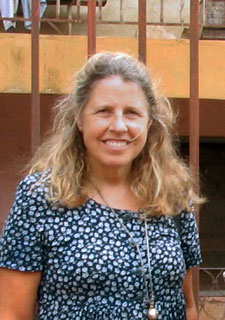 Suzanne Preston Blier
Suzanne Preston Blier
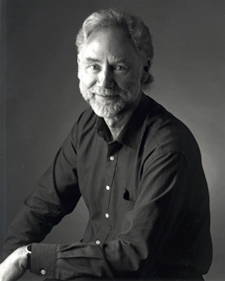 Terry Smith (photograph by John Williams)
Terry Smith (photograph by John Williams)
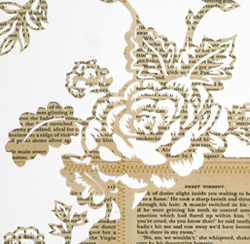 Lauren Scanlon, Sweet Torment (Sorrel II), 2010, hand-cut book pages from romance novels and gold thread on paper, 17½ x 15¼ in. (artwork © Lauren Scanlon)
Lauren Scanlon, Sweet Torment (Sorrel II), 2010, hand-cut book pages from romance novels and gold thread on paper, 17½ x 15¼ in. (artwork © Lauren Scanlon)
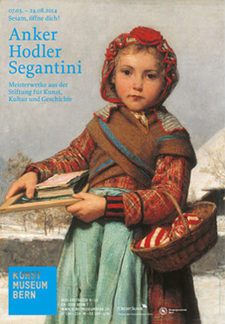 Poster for Open Sesame! Anker, Hodler, Segantini
Poster for Open Sesame! Anker, Hodler, Segantini
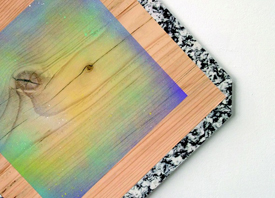 Detail of Parsley Steinweiss, Untitled, 2013, spray paint on digital C-print mounted on Plexiglas and Sintra, 23½ x 22½ in. (artwork © Parsley Steinweiss)
Detail of Parsley Steinweiss, Untitled, 2013, spray paint on digital C-print mounted on Plexiglas and Sintra, 23½ x 22½ in. (artwork © Parsley Steinweiss)
